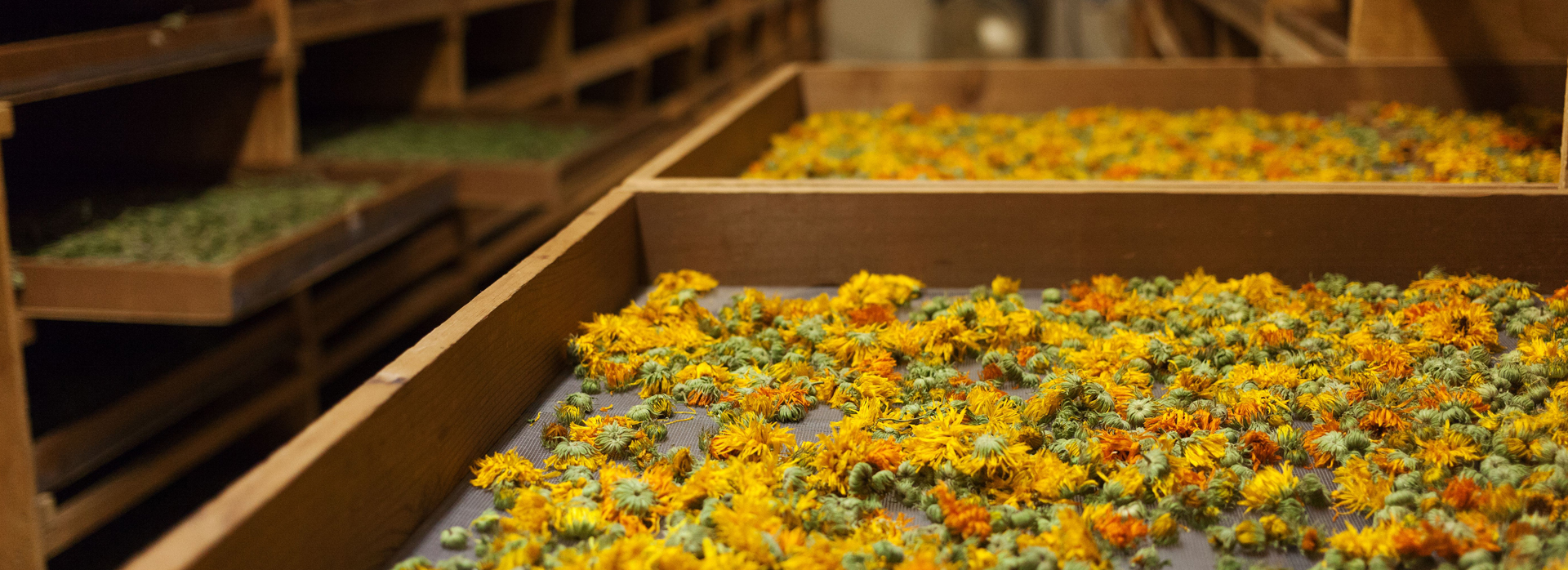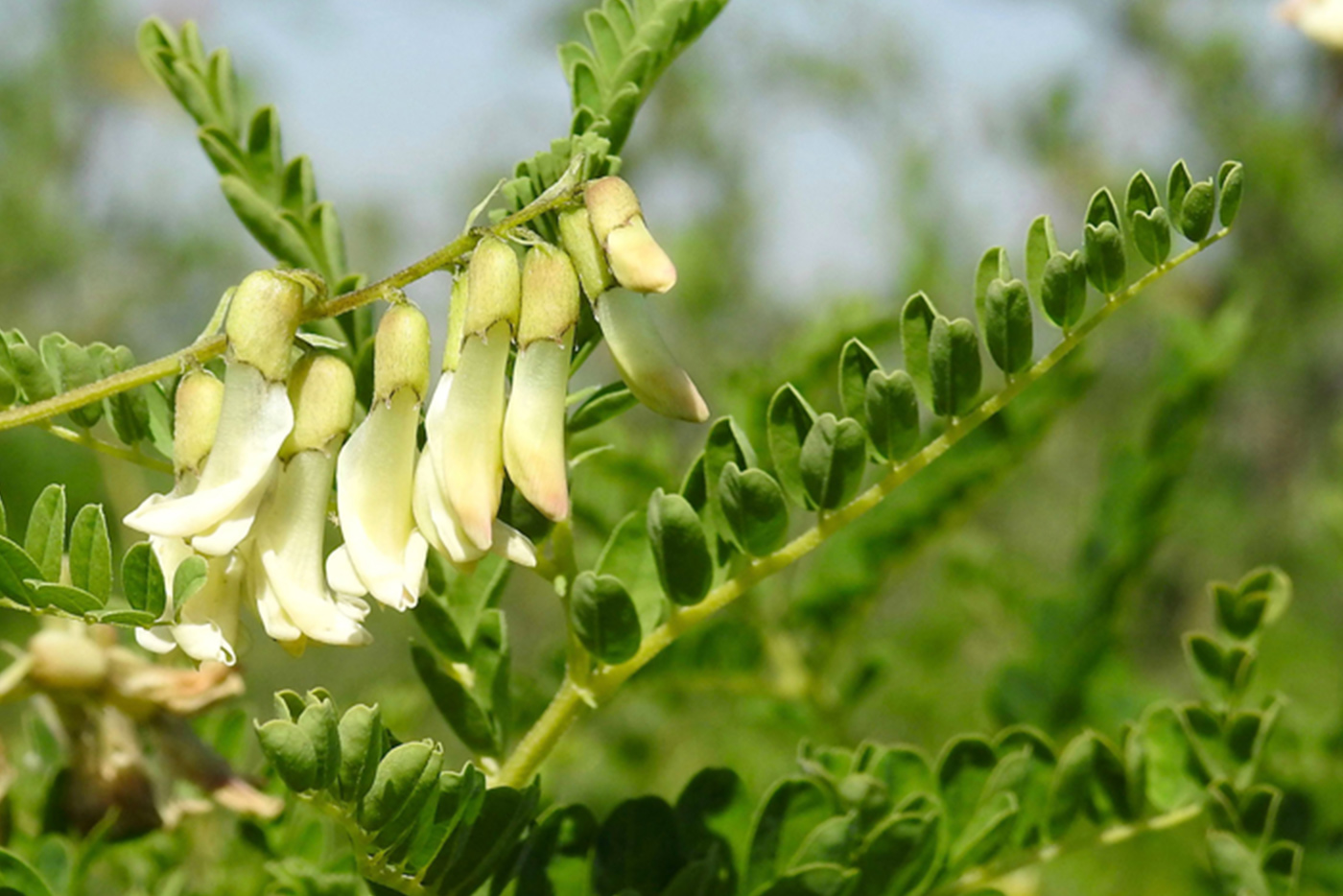A Thoughtful Process
Our actions are guided by our preference for simplicity over processing, and our trust in what nature has built over millennia of human history. Our extraction process is designed to be as gentle as possible on the herb itself. Often, our finished extracts contain just the herb extractives and the liquid used to extract them. It’s a thoughtful process with a simple result: high-quality herbal extracts.
Start with Quality
Quality extracts begin with quality herbs. Growing our own herbs (more than 65 species of them) is one way to ensure we have the control we need. We know exactly how to grow herbs and when to harvest them so that the desired phytochemicals are concentrated in the plant part we collect. Learn more about this part of the process in Our Farm.
There are some herbs that our region doesn’t lend itself to growing. Maca, for example, does best in the high altitudes of the Andes of South America. When we can’t grow an herb ourselves, we source it ethically from responsible growers and wildcrafters. We prefer to use cultivated sources, when possible, as they reduce the strain on wild plant populations, but there are instances when wildcrafting is the best way to obtain an herb. Our search for ethically sourced herbs, both cultivated and wildcrafted, has taken us to every continent on the planet, except Antarctica. Learn more about this process in Our Sourcing.
Testing, Testing and More Testing
We’re unapologetically meticulous about making sure every herb and every extract meet our rigorous specifications. We take seriously our commitment to creating consistent, high quality products.
We verify the identity of 100% of our herbs, whether we grow them or source them. We also subject the herbs we grow, and every lot of herbs we obtain from our partners, to testing based on basic criteria and an herb-specific risk assessment.
When creating our extracts, we’re careful to use only those parts of a plant that contain the highest concentrations of the sought-after phytochemicals. In some cases, we extract the whole plant, but in many more, we extract only a part of the plant – a root, a flower, a leaf. To confirm that each herb consists of the right plant part we begin with a macroscopic evaluation of its morphological features. Then as needed, we go a step further and run microscopic analysis.
To verify that a plant meets our quality specifications, we check the plant’s sensory profile (what it looks, smells and tastes like) through organoleptic analysis. We have a testing program for heavy metals and pesticide screening, which includes pesticides, fungicides, miticides and herbicides. We test for microbiological contamination, and we evaluate for foreign materials, which can include unwanted parts of the plant. For example, we may reject a batch of a plant’s leaves if it contains too much connected stem.
Once the extracts are made, we do more testing. We do organoleptic analysis and high performance thin layer chromatography (HPTLC) analysis to verify the quality and reconfirm identity of the extract.
These tests are then crosschecked against phytochemical standards, botanical reference materials and previous batches of the extract to ensure we are producing a consistent product.
For us, precision is a way of life. So, as needed, we do even further testing.
High-performance thin-layer chromatography analysis verifies the quality and reconfirms the identity of each extract.
EXTRACTION BEGINS WITH THOUGHTFUL MILLING
Once the herbs have passed the required tests and they are released for use; it’s time to begin the extraction process. We capture the herb’s phytochemicals and avoid losing any of the desired constituents, by creating custom milling processes for each plant and plant part. For example, seeds require different treatment and equipment than roots. As needed, we even design unique procedures within plant part categories. Some herbs contain particularly volatile oils that will evaporate if milled incorrectly. To address this issue, we “mill” many herbs within the menstruum (the liquid used for extraction) itself. This transfers the volatile oils directly to the extract and avoids releasing them into the air.
A Careful Balance
Exposing the cellular structure, without milling too finely, requires a careful balance. We stop our milling at a coarse grind. The idea is to create particles just small enough to create an evenly concentrated mixture when they are combined with the menstruum. Too fine a grind and the solid herb can compact, forcing the menstruum away from the herb. After milling, the herb goes straight into the menstruum, if it’s not there already. By extracting herbs immediately after milling, we reduce time for oxidation and retain an herb’s characteristic aroma and flavor.
Chamomile awaits its turn for extraction.
An Even Soak
Depending on the herb, the maceration stage of our extractions ranges from two to three weeks or even longer. The menstruum in which the maceration takes place is a customized composition of Certified Organic cane alcohol and distilled water, sometimes with the addition or substitution of Certified Organic non-palm vegetable glycerin. We determine the menstruum composition for each herb through a process that includes literature review and lab testing.
Maceration is complete when the extract reaches a homogeneous state (where the liquid inside the herb is the same strength as the liquid outside it).
To achieve true homogeneity, we must shake or stir a menstruum every work day, and the herbs inside it must have been properly milled to the right particle size – not too big and not too small.
Pressing & Filtering
After maceration, we use a hydraulic press to separate the liquid extract from the solid plant material. Then we filter the liquid through the appropriate filter media. The marc, or remaining solid plant material, is taken to our farm, composted and spread out over next year’s crop.
This marc is the leftover solid plant material that was separated from our completed Turmeric liquid extract.
Above & Beyond
We thoughtfully scrutinize each step in our process, regardless of whether the plant comes from our own Certified Organic farms or from half a world away.
Our intense Quality Assurance process focuses on herbal identity, purity, strength and composition, limits on contaminants, traceability and good manufacturing practices.
In addition to adhering to our own stringent guidelines, of course, we follow the FDA’s Good Manufacturing Practices, a set of regulations the FDA imposes and monitors.
We voluntarily subject our process and our facility to third-party audits that can confirm we’re following manufacturing best practices.
Our process is Certified by UL with regard to NPA (Natural Products Association) Certification Schemes.
Our facility has been audited by UL Registrar LLC and meets GMP requirements listed in NPA (Natural Products Association) Certification Schemes which is uniquely accredited by the American National Standard Institute (ANSI) developed in accordance with applicable sections of the FDA’s code of federal regulations.
Why We Choose To Make Liquid Extracts
Our thoughtful cultivation, sourcing and processing all culminate in liquid herbal extracts we’re proud of. But why did we choose to create liquid herbal extracts in the first place? What are the benefits of taking herbs in this format? Explore this topic deeper in Why Liquid Herbal Extracts.




